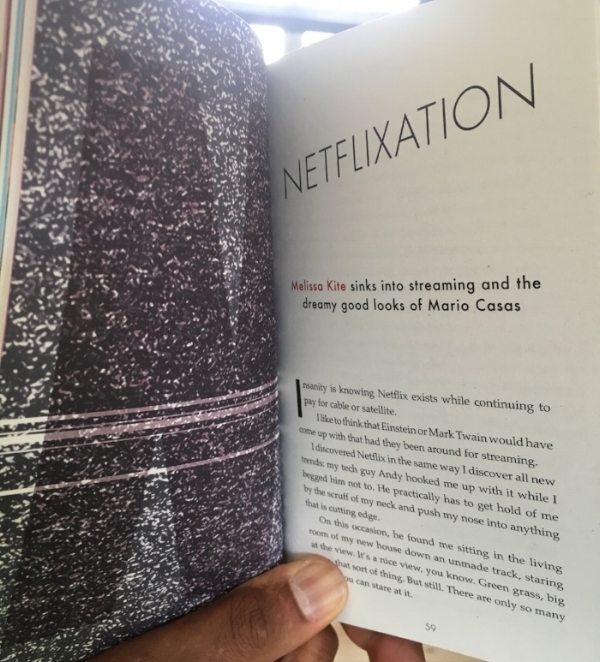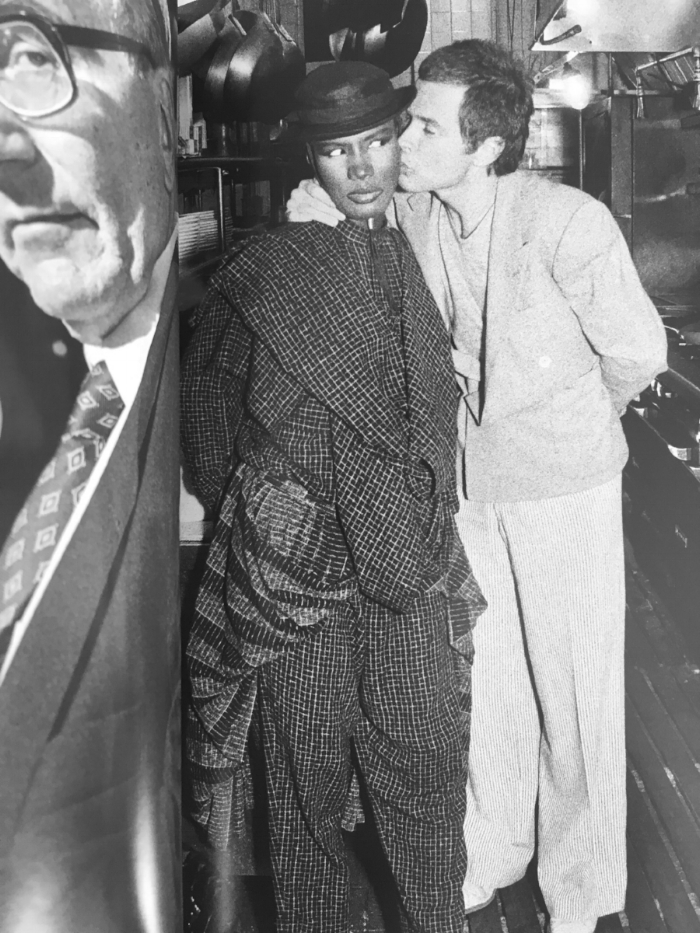Last week I scooted over to cosy bookshop Libreria to celebrate the joy of magazines and one launch in particular. There are lots of pieces on here that gush about the former so let’s focus on the latter. It’s called Drugstore Culture and takes inspiration from Schwab’s Pharmacy on Sunset Boulevard.
No, this isn’t a catalogue of miraculous remedies and cures – well, not exactly. Back in its heyday, from the Forties right through to the Seventies, Schwab’s was the place to be – part drugstore, part diner, all go. They dispensed everything from prescriptions to shakes, sodas, make-up and even generous credit.
Movie stars would rub shoulders with composers, photographers, wannabees and ain’t-ever-gonna-bees. They even had a phone that would ring when opportunity came calling from nearby studies and agents.
The New York Times has described the store as one of Hollywood's most enduring legends, while Billy Wilder and Ed Ruscha have immortalised Schwab’s in their work. At the core, this hub managed to encapsulate what is and what could be. It was an institution. This is the spirit that Drugstore Culture hopes to evoke.
Published by businessman Charles Finch, this inaugural paperback-like publication is the precursor to a digital platform that will run alongside it from September. There will also book talks, discussions and other live events as well as holistic healthcare products (of course). But let’s stick with print for now.
The editor is Matthew D’Ancona (New Statesman, Sunday Telegraph), with Peter Hoskin as his deputy. At Libreria both were in conversation with Hadley Freeman and doing their best to excite us with the grand vision. The message? Get ready. The magazine certainly feels good in the hand. At 18cm x 11cm and weighing in at 160 pages, perfect bound, Drugstore Culture is a cute little reader. It's made to be carried and kept. Slip it into your blazer pocket, your purse, your tote (if you must).
We’re told that it’s a blend of “film, art, politics and soul”. Nothing remarkable there, you might think. But these are merely starting points. It says as much on the front cover. The delight is always in the how and D’Ancona is bullish in his mission statement. “We have not come just to observe but to participate. We intend to intervene, to entertain, to inspire. Culture is the prism through which the modern world is best understood.”
A big part of it is being able to connect the dots between then and now, something both Finch and D’Ancona mention in their introductions. Finch promises that, “Relish for the enduring style of times past is more than matched by the shock of the new.”
In terms of influences – Hoskin prefers to say magazines they admire – you wouldn’t normally mention golden era Rolling Stone and Gal-Dem in the same breath. However, both have managed to reflect and shape the times by publishing stories from strong voices that dissect important issues. So why not learn from them?
Anyway, let's dip inside. Here are a few highlights:
- Critic David Thompson discusses Emily Blunt and Claire Foy in the context of #MeToo. He ponders the path that women could/should take in a still male-dominated industry if they’re not “new faces” or “senior actress” like Streep, Dench and Mirren. “These stories [The Young Victoria, Into the Woods, The Girl on the Train and A Quiet Place] used her as a woman afraid – and too much victimisation is bad for an actress. Blunt needs to be strong and amused.”
- Author Jenny McCartney on Steve McQueen, the screen idol who couldn't shake his demons. “When stardom hit, McQueen was often not cool at all off-screen, but a mess of unresolved pain – in his troubled relationships with women, his competitiveness with other men, his insecurities, substance abuse and coiled rage. Channeled through a role and a camera, however, his anger has its uses. The look of resistance in Frank Bullitt’s eyes when he stares at the self-serving bullying Chalmers is an authentic one: McQueen had seen fraudulent authority up close before, and thought it stank.”
- Matthew D’Ancona interviews his old chum David Miliband, the man so often touted as a future PM and saviour of the Centre Left. Miliband’s take on the madness of the past few years? “Populism is popular until it gets elected – because it doesn’t deal in answers.” Let's see if he does anything about it.
- Spectator columnist Melissa Kite on falling for the foreign language section of Netflix, Mario Casos n’all. Who could resist her synopsis for “romantic comedy horror” The Bar (El bar)? “A group of strangers is holed up in a bar as what looks like a terrorist attack erupts outside and, one or more of them have possibly caught Ebola, they have to escape by squeezing down a manhole into a sewer, slathered in cooking oil. This beats QVC on a night when they're trying to shift fake tan.”
- Finch publishing director Clementine Crawford meets composer Michael Nyman, whose score for The Piano captivated designer Alexander McQueen from the first note. Nyman is very forthcoming and open, this from the composer for whom “emotion is just a consequence.” . Looking back on the development of the soundtrack and finding the music that Holly Hunter’s character Ada would play, he became a musicologist of sorts. “I had to reinvent myself with music that I never imagined I would write, and subsequently became well known as being a composer who has great insight into women’s self-expression. I became Mr Sensitive."
- Olive Pometsey trails the queue from Studio 54 to the glittered and face paint-adorned revelry of events such as Secret Garden Party and Magic Door. It seems we still can’t ignore the call to hedonism. And that’s not such a bad thing. We need to lose ourselves now more than ever, she argues. Pometsey is a young journalist working her way up at Elle and we are told that Drugstore Culture will provide a space for others like her. Marvellous. I have asked for a few tips for those that wish to pitch. More as I have it.
- Peter Hoskin checks out the video game streaming phenomenon and introduces us to a few stars from this brave new world of entertainment such as Dr DisRespect, aka 36-year-old Guy Beahm. The doctor earns about $100,000 a month from his cut of Twitch revenues plus viewer donations. “He wears a mullet wig, a powerful black moustache and a pair of wraparound shades, and has the sort of personality that comes from years of steroid abuse and a lifetime subscription to Guns & Ammo magazine.”
- Adam Frankel, once a speechwriter for Barack Obama, interviews former Secretary of State Madeleine Albright, who is author of Fascism: A Warning. She speaks with a measured and cautious tone. It's a short but thought-provoking interview. Albright believes in the resiliency of democracy but fears for its fragility. Aye.
- Photographer Jonathan Becker remembers legendary Upper East Side hangout Elaine’s, a restaurant where fashion always came before food. The issue is worth it for his photos alone. Celeb spotters, fill your boots. On the eponymous proprietor, he writes: “Elaine’s stood at the very top of in New York. People were terrified of her capricious snap judgements. She didn’t warm to businesspeople unless they had some real charm or connections or maybe owned the Yankees. There were no by-laws in this club. No committees. In or out: Elaine’s call. Everyone wanted in."”
And there's more, including favourite film lists from the likes of John Cleese and Afua Hirsch.
Not bad for an “issue 0” and easily devoured in one sitting (take your time though). It’s all laid out in a patient, considered manner with just the right amount of colour and craft. The use of a highlighted rainbow palette reminds me of the groundbreaking in-house design team at Swiss pharmaceutical and chemical company Geigy. Hint hint: drugstore.
The tone is confident and welcoming, a collective urge to understand what is going around us. D’Ancona describes it as “fun”. Many of these titles – the ones that place political comment beside art critique and pop culture – just aren’t relatable beyond a particular elite. They can go off one on about an obscure French director or publish an out-of-touch profile about the rapper as cultural icon, but are they being meaningful in the now?
We want discoveries. They bring satisfaction and reasoned focus in the face of information overload and post-truths. Epiphanies and ah-ha moments are what we really need. This is a promising debut from Drugstore Culture. How far they move the needle in cultural discourse remains to be seen. Their goal is to start a “movement”, remember.
The real acid test will be the launch of the website – their “real-time bulletin board of cultural experience” – and fostering a community where everyone can play their part … where everyone lives to play their part. That’s culture.
Pick up your copy here. And follow either Matthew or Peter for more information on what comes next.









